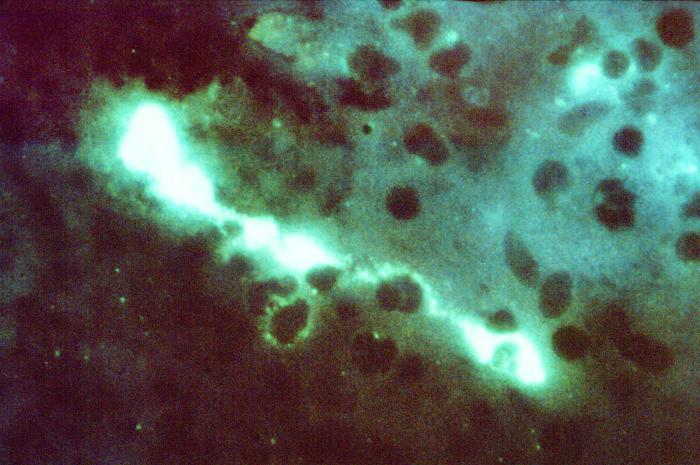Chlamydophila psittaci
| Chlamydophila psittaci | ||||||||||||
|---|---|---|---|---|---|---|---|---|---|---|---|---|
 Direct fluorescent antibody stain of a mouse brain impression smear showing C. psittaci.
| ||||||||||||
| Scientific classification | ||||||||||||
|
|
Psittacosis Microchapters |
|
Diagnosis |
|---|
|
Treatment |
|
Case Studies |
|
Chlamydophila psittaci On the Web |
|
American Roentgen Ray Society Images of Chlamydophila psittaci |
|
Risk calculators and risk factors for Chlamydophila psittaci |
Overview
Most patients with psittacosis have a history of contact with birds. Transmission of infection from other animals to humans is rare. Human-to-human transmission may occur. Certain strains of C. psittaci may infect sheep, goats, cats, dogs, dairy cattle, and horses,
Causes
At least 460 species from 30 bird orders;
- Turkeys
- Pheasants
- Chickens,
- Ostriches and penguins.
- Migratory birds such as geese, may carry this pathogen.[1]
- Mule ducks have also been associated with human disease through heavy shedding.
Most humans are infected from birds of the order psittaciformes, which includes budgerigars, cockatiels, cockatoos, and parrots. In France, , although the ducks are asymptomatic. Each bird order tends to be infected by a predominant genotype of C. psittaci.
References
- ↑ Dickx V, Kalmar ID, Tavernier P, Vanrompay D (2013). "Prevalence and genotype distribution of Chlamydia psittaci in feral Canada geese (Branta canadensis) in Belgium". Vector Borne Zoonotic Dis. 13 (6): 382–4. doi:10.1089/vbz.2012.1131. PMID 23654298.